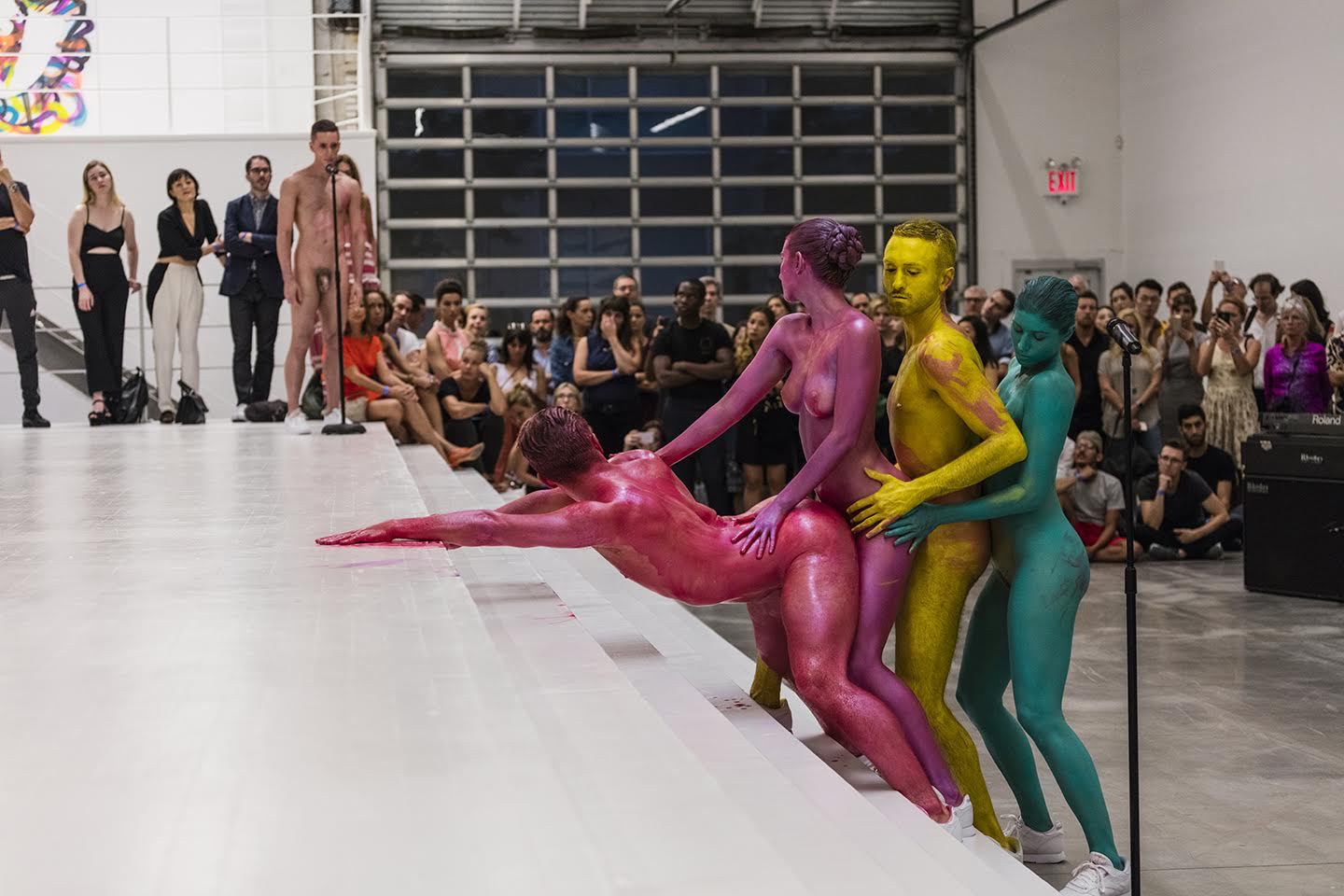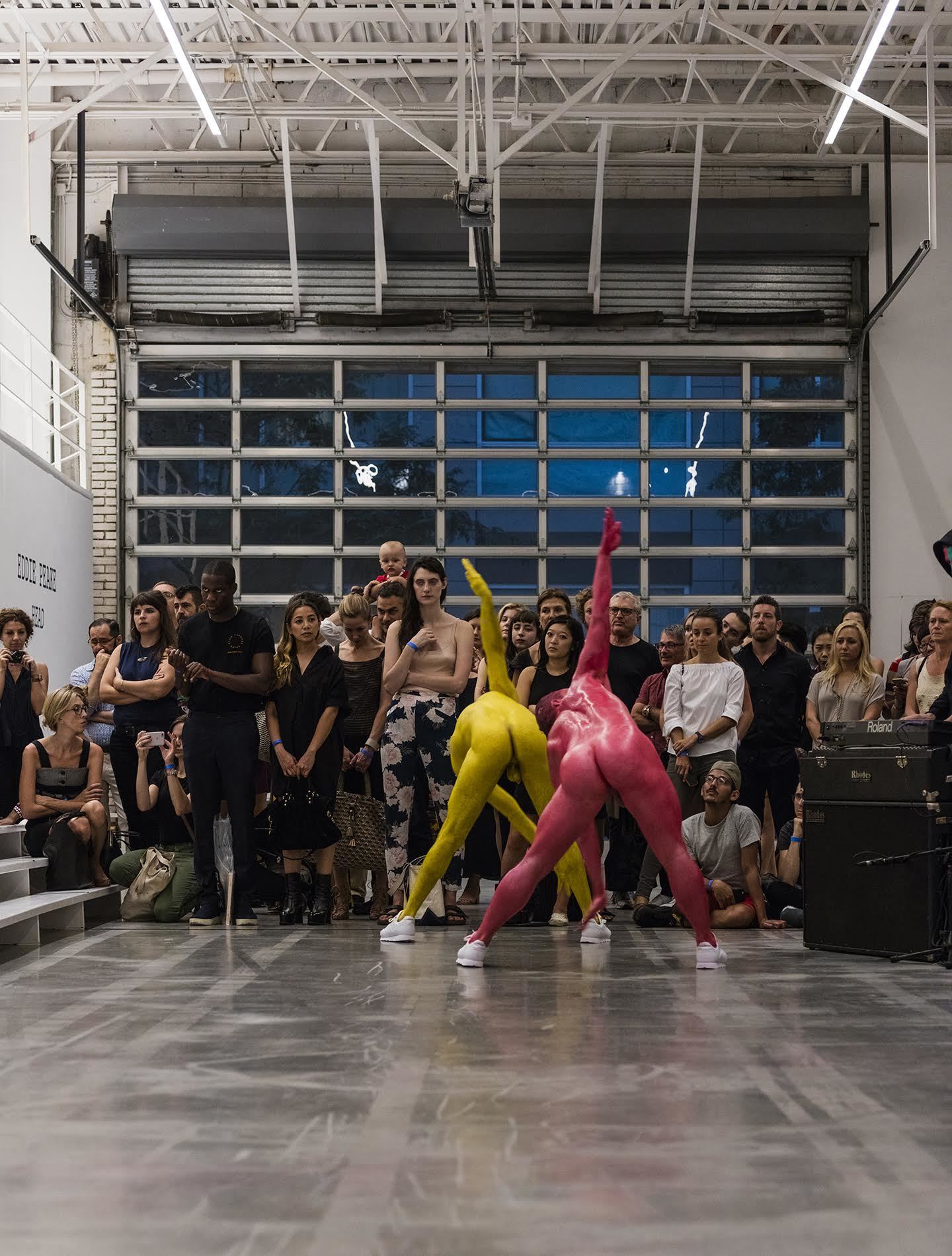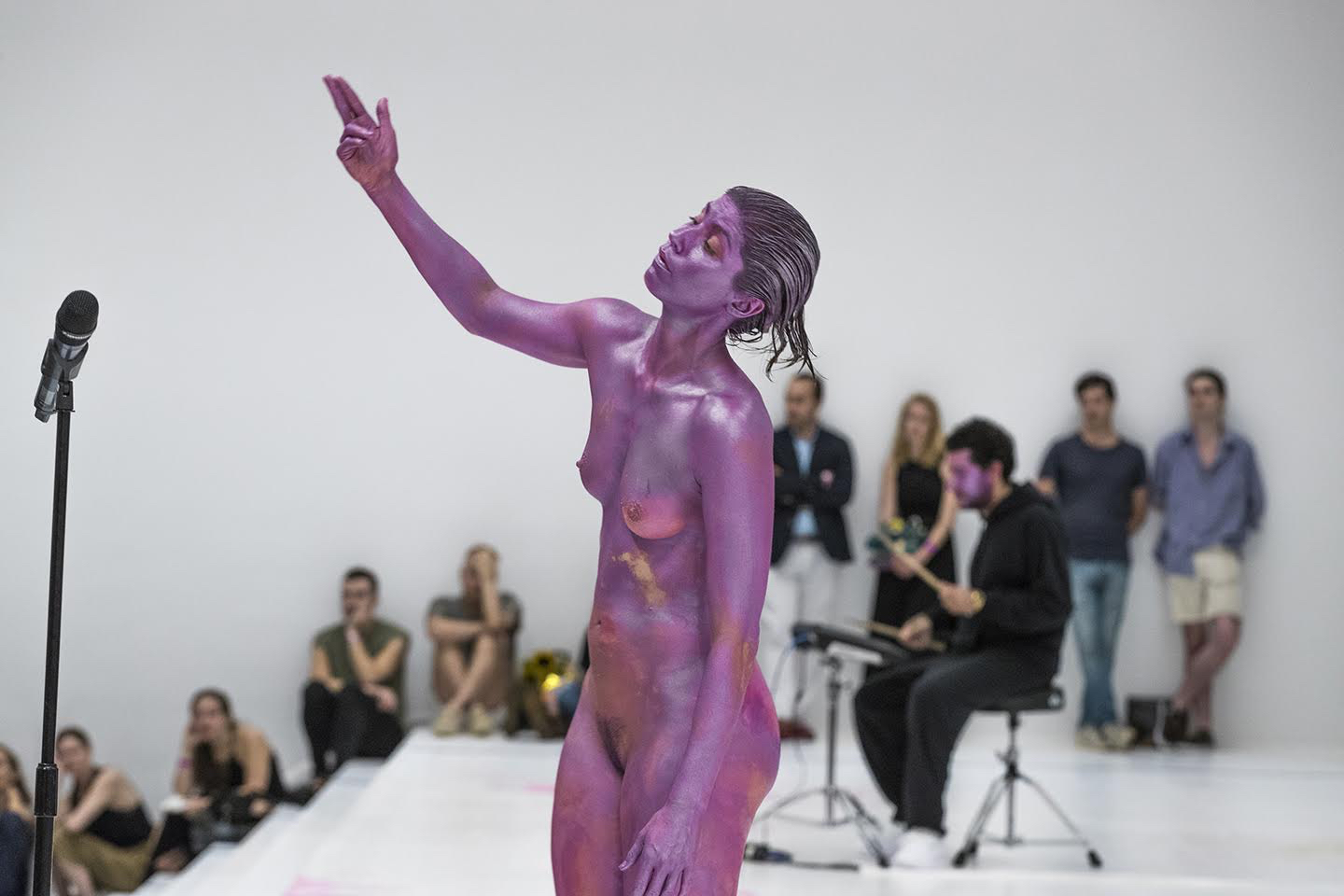This past weekend, British artist Eddie Peake debuted “Head”, a daring new performance piece, at the Jeffrey Deitch gallery in New York. In the work, five figures danced nude, covered head to toe in red, orange, yellow, turquoise, and purple body paint, with bright white Reeboks on their feet. On each of the three nights, the audience slowly filed in around them, staying close to the bright white walls. The dancers walked about the room with three musicians dressed in black, who would later play drums, a synthesizer, and an electric guitar. Peake himself perched on top of a speaker.
“Head” was commissioned by Jeffrey Deitch to inaugurate the gallerist’s return to the space which had been the legendary Deitch Projects on Wooster Street. The gallery closed in 2010 when Deitch went to work as the director of the Los Angeles Museum of Contemporary Art and the space was taken over by the Swiss Institute. Over the last few years, Peake has also staged his performances — which tackle motifs like sexual desire, relationships, and intimacy — in venues like the Tate Modern and White Cube Sao Paulo.
The piece explores sexual impulses as they manifest in unrequited desire. More specifically, the desire for the unattainable, whether it’s because of the complex nature of romantic and sexual relationships, jealousy, love triangles, or sheer deviation from the norm. For Peake, the work is intensely personal to the point where he says there is no separation between himself and what he creates. “I’m totally subjectively immersed in the work and I also want that,” he says. “The work is just me and my desires.” As an artist, he says, he has no interest in drawing a convoluted, enigmatic route away from himself.

Peake admits that his desires don’t belong to a conventional gender subset, and this manifests in his work, making it look “a little bit ambiguous in terms of sexuality.” Performers of all genders often appear nude in his work in a variety of situations, from playing soccer to roller skating. In the Deitch piece there were three men and two women. “It’s not me playing tricks about, ‘Oh, guess what the sexuality of this work is! Is it gay, is it straight?’ It just so happens to be the case that I think it ends up looking like it’s trying to move around between those different poles.”
The artist had a week to prepare the work, which he says is actually one of the longer amounts of time he has had to create a performance. He doesn’t know what a piece will look like when he starts, but each work is tailored to the space in which it appears. It is constructed collaboratively, with Peake, his dancers, and the musicians working together to create an original piece. They improvise, experiment, and workshop movements, then take the best portions of those scenarios and group them together. Peake prefers his work to have a narrative arc, though not necessarily one that’s visible to the audience.

“I like to have a sort of explosive-ish beginning subsiding into something a bit more mollified and then another explosive ending that’s a bit more explosive than the beginning explosiveness,” he says with a laugh. “It’s so the piece can have a sense of development. You’re gonna see twists and turns rather than walking in and seeing something you know is gonna be the same in 45 minutes.”
At the beginning of the performance I watched, the man painted red gazed at a blond man in the audience for what felt like an eternity, to the point where the blond was moved to tell the performer what nice eyes he has. The performer held the man’s gaze for a while longer, eventually moving away. The challenge, tension, and desire were palpable.
Shortly afterward, the dancers began a series of rigid, synchronized movements, their arms and legs making angular shapes, eventually evolving into a series of thrusts, then grinds. Their bodies pressed so close together that they transferred paint from one to another, suggesting how we leave our marks on others.
Music throbbed from the speakers, louder than before. The movement became more graphic and dynamic, with performers banging their bodies into the floor and throwing them in the air with cries of excitement, angst, and frustration. The men and women seemed to go around and around in their own personal circles, repetitive movements spinning them into a frenzy. These are all the facets of Peake’s unrequited desire, an internal monologue made external.
When the piece ended, the performers left, breathless, with only a sexual, splattered Rorschach in their wakes. Peake is everywhere in the performance. “I want the work to be real,” he says. “I just want the work to be a physical manifestation of my life.”
Related: Eddie Peake: Sexuality, Language, and Reality

Credits
Text Elyssa Goodman
Photography Matthew Placek Courtesy Jeffrey Deitch Inc. New York
